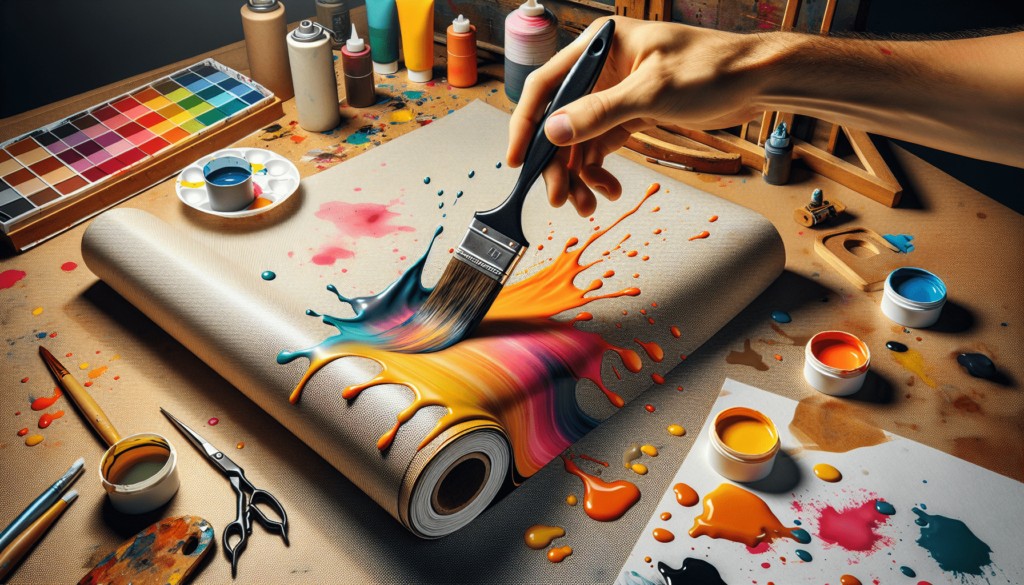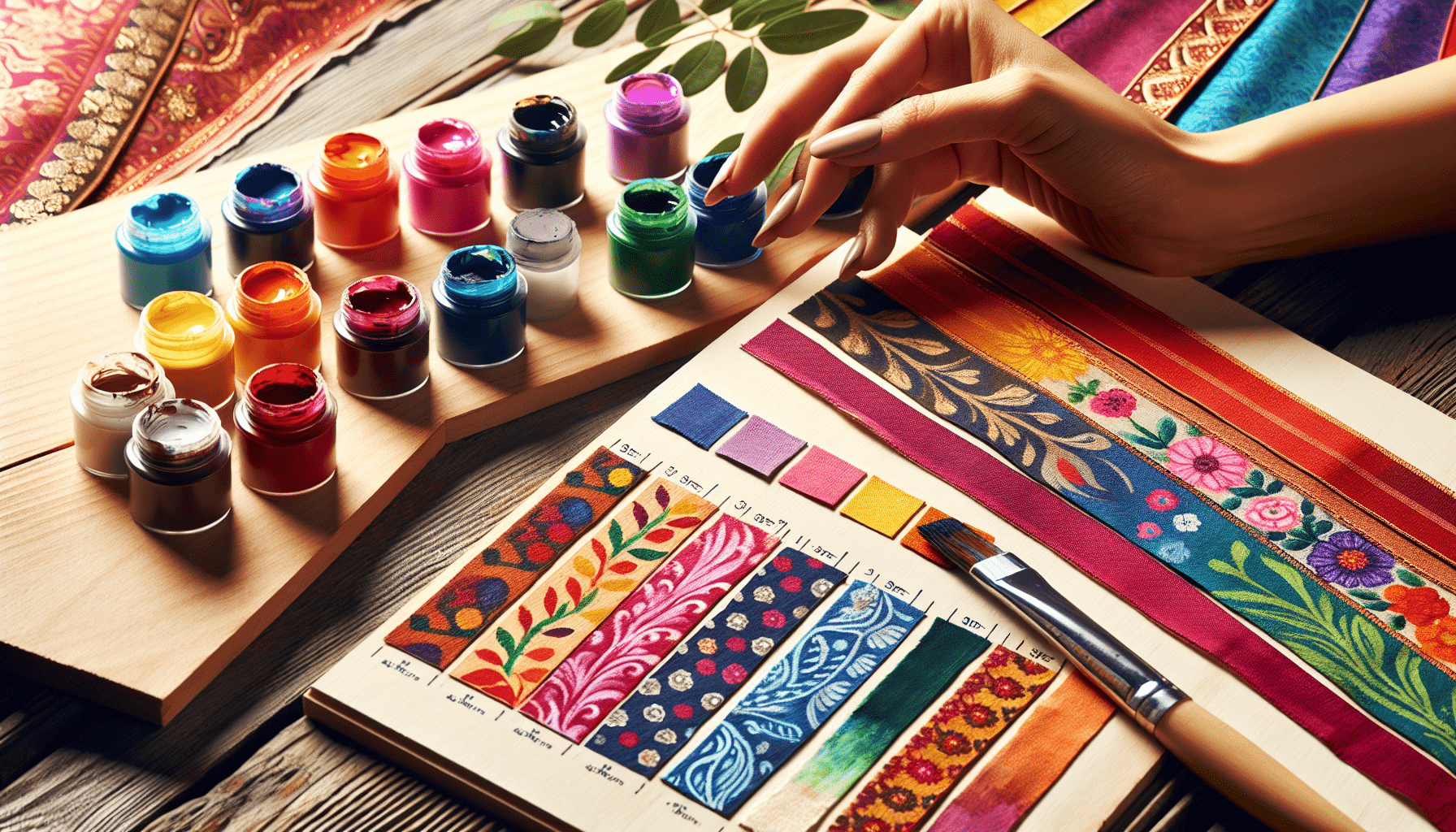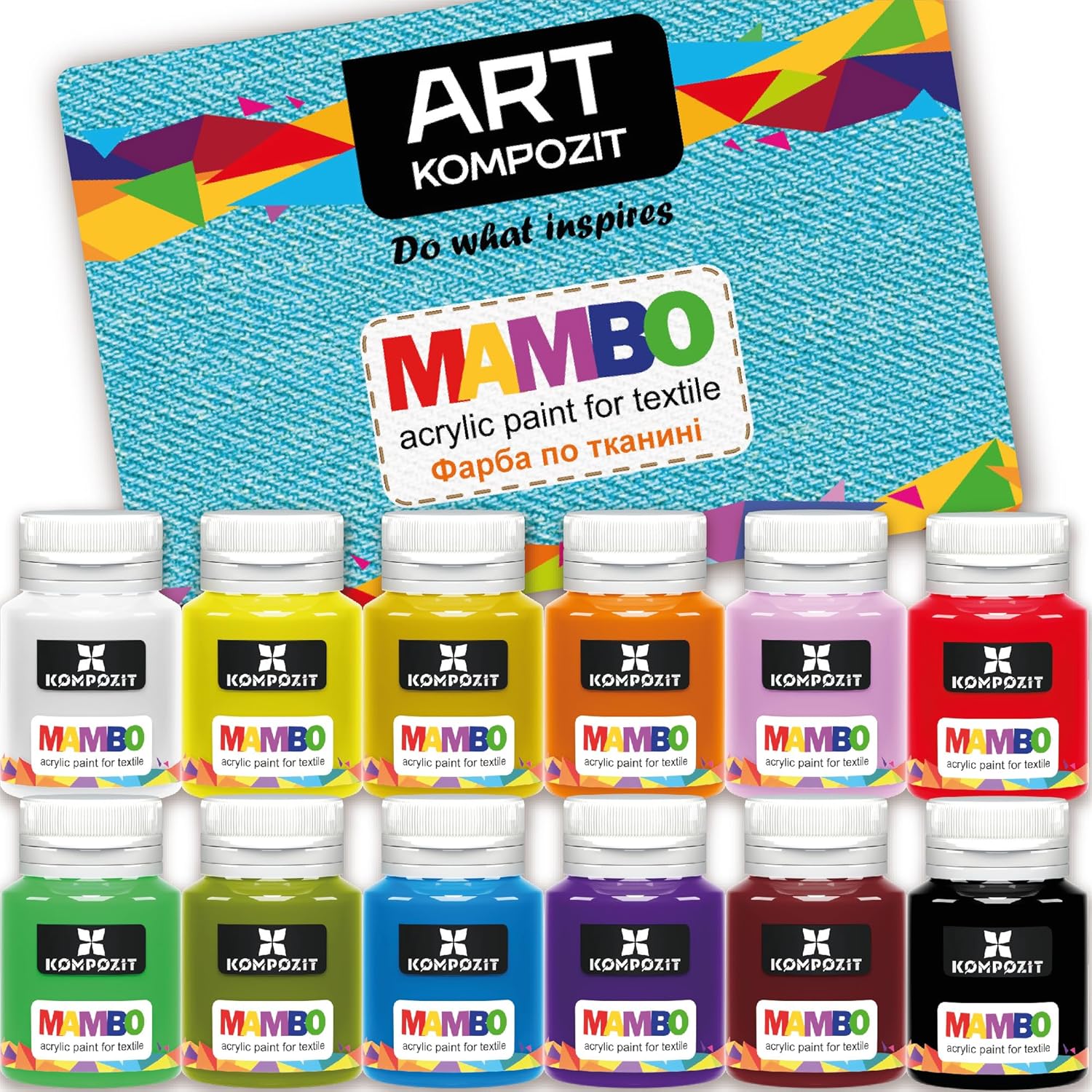Vinyl fabric has become increasingly popular due to its durability and versatility in various applications. However, if you’re looking to add a personal touch or revamp a piece of furniture made from vinyl fabric, you may be wondering if it’s possible to paint on this material. In this article, we will explore whether or not it is feasible to paint on vinyl fabric and provide you with some useful tips and techniques to achieve a successful outcome. So, if you’re ready to unleash your creativity and transform your vinyl fabric, read on to discover the answers you’ve been seeking.

Preparing the Vinyl Fabric
Before you start painting on vinyl fabric, it is crucial to properly prepare the material to ensure a successful and long-lasting result. Here are three important steps to follow when preparing vinyl fabric.
Cleaning the fabric
The first step in preparing vinyl fabric for painting is to thoroughly clean the surface. Vinyl fabric can accumulate dirt, dust, and other contaminants over time, which can hinder the adhesion of paint. To clean the fabric, mix a small amount of mild detergent with water and gently scrub the surface using a soft-bristled brush or sponge. Be sure to rinse off any residue thoroughly and allow the fabric to dry completely before moving on to the next step.
Sanding the fabric
Sanding the vinyl fabric is essential to create a rough surface that will help the paint adhere better. Start by using a fine-grit sandpaper and gently sand the entire surface of the fabric. This step will remove any glossy finish and provide a better surface for the paint to stick to. After sanding, wipe away any dust or debris with a clean, dry cloth.
Priming the fabric
To further enhance the adhesion of the paint, it is recommended to apply a primer to the vinyl fabric. Priming the fabric will create a base layer that helps the paint bond and ensures a more even and durable finish. Choose a primer specifically formulated for use on vinyl materials and apply it according to the manufacturer’s instructions. Allow the primer to dry completely before proceeding with the painting process.
Choosing the Right Type of Paint
Choosing the appropriate type of paint is crucial to achieving the desired results when painting on vinyl fabric. Here are three common types of paint that work well on vinyl:
Acrylic paint
Acrylic paint is a versatile choice for painting on vinyl fabric. It is water-based, quick-drying, and offers a wide range of color options. When using acrylic paint, it is important to mix in a fabric medium to ensure flexibility and prevent cracking. This type of paint is ideal for intricate designs and detailed work.
Vinyl paint
Specifically formulated for use on vinyl materials, vinyl paint is an excellent option for painting on vinyl fabric. It provides a flexible and durable finish that adheres well to the fabric. Vinyl paint is available in various colors and finishes, allowing you to achieve the desired look for your project. Follow the manufacturer’s instructions for application and drying times.
Fabric spray paint
Fabric spray paint is a convenient option for painting larger areas of vinyl fabric. It is designed to provide even coverage and requires no brushes or additional equipment. Simply shake the spray can well and apply the paint evenly across the fabric surface. Fabric spray paint is available in a wide range of colors and finishes, providing ample options for customization.
Gathering the Necessary Supplies
Before you begin the painting process, gather all the necessary supplies to ensure a smooth and efficient workflow. Here are some essential items you’ll need:
Paintbrushes
When using acrylic or vinyl paint, it is recommended to have a variety of brushes with different bristle sizes on hand. This will allow you to paint both small details and larger areas with ease. Opt for brushes that are suitable for use with water-based paints and have synthetic bristles for smooth application.
Painter’s tape
Painter’s tape is a valuable tool when it comes to creating clean, sharp lines and protecting certain areas from accidental paint splatters. Use painter’s tape to mask off any parts of the fabric you want to keep paint-free, such as seams or decorative elements. Ensure that the tape adheres well to the fabric to prevent paint bleed-through.
Dropcloth or newspaper
Protect your work surface by laying down a dropcloth or spreading out sheets of newspaper. This will prevent any accidental spills or drips from staining the surface and make for easier cleanup afterward. Make sure the dropcloth or newspaper covers a sufficient area to catch any potential paint splatters.
Disposable gloves
Wearing disposable gloves is highly recommended when working with paint to keep your hands clean and prevent any skin irritation. Choose gloves that are made of a durable and flexible material, such as latex or nitrile, to provide sufficient protection while allowing comfortable movement of your hands.
Painting Techniques
When it comes to painting on vinyl fabric, there are two primary techniques to consider: brush painting and spray painting. Each technique has its advantages and may be more suitable for different projects or personal preferences.
Brush painting
Brush painting involves using a paintbrush to apply the paint onto the vinyl fabric. This technique provides precise control and is ideal for intricate designs or small areas that require attention to detail. When brush painting, start with thin layers of paint and gradually build up the color to achieve the desired opacity. Allow each layer to dry completely before applying the next.
Spray painting
Spray painting is a quicker option for covering larger areas of vinyl fabric. It involves using a can of paint with a nozzle that produces a fine mist of paint particles. To ensure even coverage, hold the can at a consistent distance from the fabric and move it in a smooth, sweeping motion. Take care to avoid overspray by protecting any surrounding areas that should remain paint-free.

Applying the Paint
Once you have prepared the vinyl fabric and gathered your supplies, it is time to start applying the paint. Follow these steps for the best results:
Starting with a base coat
Before diving into the desired colors or designs, it is essential to start with a base coat. The base coat acts as the foundation for the subsequent layers of paint and provides a consistent background. Apply the base coat evenly using either brush painting or spray painting techniques, depending on your preference. Allow the base coat to dry completely before proceeding.
Building up layers
To achieve a vibrant and long-lasting finish, it is recommended to apply multiple layers of paint. This will help ensure consistency in color and coverage. Whether using brush painting or spray painting, start with thin layers and allow each one to dry before applying another. Building up layers gradually will minimize the risk of paint clumping or cracking.
Drying and Curing
Proper drying and curing are crucial steps after painting on vinyl fabric. This will ensure that the paint adheres well and becomes resistant to wear and tear. Here are two methods to consider:
Air drying
Allowing the painted vinyl fabric to air dry is a common and effective method. Depending on the type of paint used and the thickness of the layers, drying times may vary. Ensure that the fabric is placed in a well-ventilated area with good air circulation to speed up the drying process. Avoid handling the fabric until it is completely dry to prevent smudging or smearing.
Heat setting
If you prefer a faster drying and curing time, heat setting the painted fabric is an option. Heat can help accelerate the bonding of the paint to the fabric. Place a clean, dry cloth over the painted fabric and apply heat using an iron on a low setting. Gently press the iron over the fabric, moving continuously to avoid scorching or damaging the paint. Follow the paint manufacturer’s instructions for recommended heat setting times and temperatures.
Sealing and Protecting the Paint
To ensure the longevity and durability of the painted vinyl fabric, it is recommended to apply a sealant or protective layer. This will help prevent the paint from flaking or peeling off over time. Consider these two options:
Using a clear sealant
Applying a clear sealant over the painted surface will provide an additional layer of protection. Choose a clear sealant specifically formulated for use on painted vinyl or fabric materials. Apply the sealant evenly using a brush or spray, following the manufacturer’s instructions. Allow the sealant to dry completely before using or storing the painted fabric.
Heat sealing
Heat sealing is an alternative method to protect the painted vinyl fabric. As with heat setting, place a clean, dry cloth over the painted fabric and use an iron set to a low temperature. Gently apply heat to seal the paint layer, moving the iron continuously to avoid overheating or damaging the fabric. Heat sealing can further enhance the longevity of the paint and create a more durable finish.
Maintaining the Painted Vinyl Fabric
To keep your painted vinyl fabric looking its best, proper maintenance is crucial. Follow these tips to ensure longevity and prevent damage:
Proper cleaning methods
When cleaning painted vinyl fabric, use a mild detergent mixed with water and a soft-bristled brush or sponge. Avoid abrasive scrubbing or harsh chemicals, as these can damage the paint and fabric. Gently blot stains or spills instead of rubbing them vigorously. Allow the fabric to air dry fully before using or storing it to prevent moisture-related issues.
Avoiding harsh chemicals
To preserve the integrity of the painted vinyl fabric, avoid exposing it to harsh chemicals or solvents. These substances can cause the paint to fade, crack, or peel, compromising the overall appearance. Keep in mind that some cleaning products, including certain household cleaners or disinfectants, may contain harsh chemicals. Always check the labels for any warnings or recommendations regarding use on painted surfaces.
Additional Tips and Considerations
Here are some additional tips and considerations to ensure a successful painting experience on vinyl fabric:
Testing the paint on a small area
Before starting your project, it is advisable to test the paint on a small, inconspicuous area of the vinyl fabric. This will allow you to assess the adhesion, color, and overall finish of the paint. Additionally, testing will provide an opportunity to make any necessary adjustments or changes before proceeding with the entire project.
Working in a well-ventilated area
Ensure that you are working in a well-ventilated area when painting on vinyl fabric. Adequate ventilation will help minimize the inhalation of fumes and assist in the drying process. Open windows or use fans to improve air circulation and reduce the concentration of paint odors. If necessary, wear a mask to protect yourself from any potentially harmful fumes.
Avoiding excessive heat exposure
While heat setting and heat sealing are beneficial for the drying and curing process, it is important to avoid excessive heat exposure after the paint has fully dried. Prolonged exposure to high temperatures, such as direct sunlight or heat sources, can cause the paint to fade or become damaged over time. Whenever possible, store or display the painted fabric in a cool and shaded area.
Final Thoughts
Painting on vinyl fabric can be a creative and rewarding endeavor. By following the proper preparation techniques, choosing the appropriate paint type, and using the correct methods during application, you can achieve beautiful and long-lasting results. Remember to take the necessary steps to ensure the paint’s durability, protect the fabric, and maintain the painted surface properly. With careful attention to detail and proper maintenance, your painted vinyl fabric can withstand the test of time and bring a touch of personalization to your space or projects.



